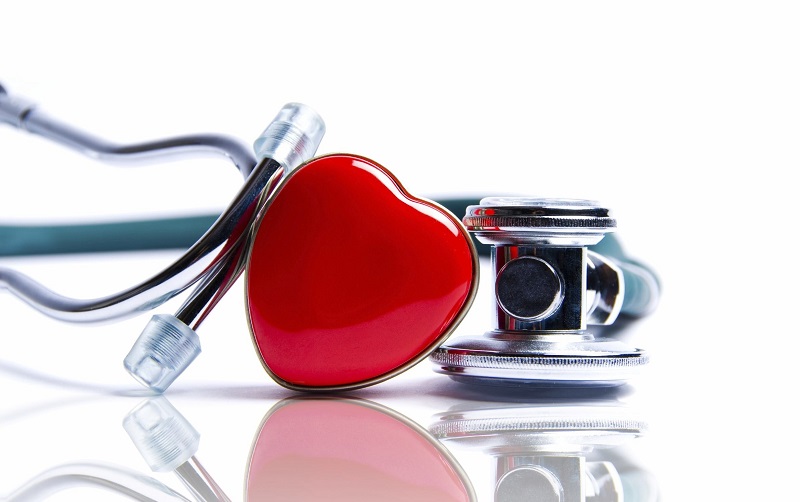Ten fascinating facts about high blood pressure and stroke
Did you know that weakened arteries in the brain, resulting from high blood pressure, increase the risk for stroke? Here are ten more fascinating facts that link high blood pressure and stroke and outline the importance of keeping blood pressure under control.
- More than one billion people have high blood pressure worldwide
High blood pressure is more common than you might think. Over one billion people are estimated to suffer from the condition worldwide and, with often little or no symptoms, many more are undiagnosed (1).
- High blood pressure figures have doubled since 1990
Lifestyle factors, such as physical inactivity, a salt-rich diet with highly processed and fatty foods, and alcohol and tobacco use, are at the centre of an increase in high blood pressure worldwide. This is spreading at an alarming rate from developed countries to low- or middle-income countries (2).
- Heart disease and stroke are leading causes of death worldwide
The rise in the number of adults with high blood pressure is directly linked to the incidence of deaths from heart disease and stroke, two of the biggest killers in the world (3). Despite several initiatives, the prevalence of high blood pressure and cardiovascular deaths are increasing globally (4).
- 90-95% of adult cases are classed as primary high blood pressure
There are two types of high blood pressure: primary and secondary. Primary, which may develop as a result of environmental or genetic causes, accounts for 90-95% of adult cases. While secondary, caused by other underlying conditions or medications, only accounts for up to 2-10% of cases (5).
- People over 40 should have blood pressure checked regularly
Regular blood pressure monitoring is the key to preventing and managing high blood pressure. It is generally recommended that all adults over 40 years of age, without any other risk factors, have their blood pressure checked at least every five years so that any potential problems can be detected early (6).
- Normal blood pressure should be lower than 120/80
Your blood pressure reading consists of two figures: systolic and diastolic. A normal reading should be lower than 120/80. High blood pressure is diagnosed if the first number (systolic pressure) is above 140 and the second number (diastolic pressure) is above 90 (4).
- High blood pressure causes millions of deaths each year
High blood pressure affects around one billion people and causes an estimated 10.7 million deaths every year (2). But, known as the ‘silent killer’, around one in three adults aren’t even aware they have it. That’s why it’s so important to get your blood pressure checked every year (3).
- High blood pressure is more common in the over-65s
Many factors influence your likelihood of developing high blood pressure. Some are modifiable – for instance, you could stop drinking alcohol or smoking. Others are non-modifiable, such as old age: people over the age of 65 are more likely to suffer from it (4).
- There are three main groups of blood pressure medications
The main types of blood pressure medication are thiazide and thiazide-like agents; angiotensin-converting enzyme (ACE) inhibitors/angiotensin-2 receptor blockers (ARBs); and long-acting calcium channel blockers. Your doctor may need to try different combinations to find out what works best for you (7).
- It’s easy to prevent high blood pressure and reduce stroke risk
There are several different things you can do to reduce your chance of stroke, caused by high blood pressure. These include losing weight; exercising more; limiting your tobacco, salt and alcohol intake; reducing stress; and getting a good night’s sleep (4).
References
- Tu N Nguyen, Clara K Chow. Global and national high blood pressure burden and control. Lancet. 2021 August 24. Volume 398, issue 10304, P932-933. DOI: https://doi.org/10.1016/S0140-6736(21)01688-3.
- Worldwide trends in hypertension prevalence and progress in treatment and control from 1990 to 2019: a pooled analysis of 1, 201 population-representative studies with 104 million participants’ by the NCD Risk Factor Collaboration (NCD-RisC). The Lancet.
- Virani SS, Alonso A, Benjamin EJ, Bittencourt MS, Callaway CW, Carson AP, et al. Heart disease and stroke statistics-2020 update: a report from the American Heart Associationexternal icon. Circulation 2020 and 141:e139-596. .
- Thomas Unger et. al. 2020 International Society of Hypertension. Global Hypertension Practice Guidelines. 6 May 2020 https://doi.org/10.1161/HYPERTENSIONAHA.120.15026Hypertension.; 75:1334–1357 .
- Matthew R Alexander, MD, PhD et al. Hypertension. Updated 2019 Feb 22. https://emedicine.medscape.com/article/241381-overview#a4.
- Walter N. Kernan, Silvio E. Inzucchi. Treating Diabetes to prevent stroke. Originally published 20 Apr 2021. https://www.ahajournals.org/doi/full/10.1161/STROKEAHA.120.032725.
- Organisation, Guideline for the pharmacological treatment of hypertension in adults. Geneva: World Health and 3.0.IGO, 2021. Licence CC By-NC-SA.
Updated February 2022
Next review 2024


